Page 105 of 168

103
OVERVIEW REPAIRSOPERATIONCONTROLS DATA INDEX
TIRE INFLATION PRESSURE
Model Tire size Pressures specified in psi/kPa
All pressure specifications in the table are
indicated in psi/kilopascal with cold tires.
Cold = ambient temperature
Traveling speeds up to 100 mph/
160 km/habove 100 mph/
160 km/h
MINI COOPER S195/55 R 16 87 V M+S A/S
195/55 R 16 87 V30/210 30/210 30/210 30/210 35/240 35/240
195/55 R 16 87 H M+S 33/230 33/230 33/230 33/230 38/260 38/260
205/45 R 17 84 V M+S A/S
205/45 R 17 84 V M+S
205/45 R 17 84 V35/240 35/240 35/240 35/240 39/270 39/270
175/60 R 16 82 H M+S
205/40 R 18 82 W36/250 36/250 36/250 36/250 41/280 41/280
MINI COOPER S
with John Coo-
per Works Kit
*
195/55 R 16 87 V M+S A/S
195/55 R 16 87 V32/220 32/220 32/220 32/220 35/240 35/240
195/55 R 16 87 H M+S 33/230 33/230 33/230 33/230 38/260 38/260
205/45 R 17 84 V M+S A/S
205/45 R 17 84 V M+S
205/45 R 17 84 V35/240 35/240 35/240 35/240 39/270 39/270
175/60 R 16 82 H M+S
205/40 R 18 82 W36/250 36/250 36/250 36/250 41/280 41/280
Page 106 of 168

104
TIRE INFLATION PRESSURE
More information about permissible loads and weights can be found on pages149,150. Model Tire size Pressures specified in psi/kPa
All pressure specifications in the table are
indicated in psi/kilopascal with cold tires.
Cold = ambient temperature
Traveling speeds up to 100 mph/
160 km/habove 100 mph/
160 km/h
MINI COOPER S
Convertible195/55 R 16 87 V M+S A/S
195/55 R 16 87 V30/210 30/210 30/210 30/210 35/240 35/240
195/55 R 16 87 H M+S 33/230 33/230 33/230 33/230 38/260 38/260
205/45 R 17 84 V M+S A/S
205/45 R 17 84 V M+S
205/45 R 17 84 V35/240 35/240 35/240 35/240 38/260 38/260
175/60 R 16 82 H M+S
205/40 R 18 82 W36/250 36/250 36/250 36/250 41/280 41/280
MINI COOPER S
Convertible
with John Coo-
per Works Kit
*
195/55 R 16 87 V M+S A/S
195/55 R 16 87 V32/220 32/220 32/220 32/220 35/240 35/240
195/55 R 16 87 H M+S 33/230 33/230 33/230 33/230 38/260 38/260
205/45 R 17 84 V M+S A/S
205/45 R 17 84 V M+S
205/45 R 17 84 V35/240 35/240 35/240 35/240 39/270 39/270
175/60 R 16 82 H M+S
205/40 R 18 82 W36/250 36/250 36/250 36/250 41/280 41/280
Page 107 of 168

105
OVERVIEW REPAIRSOPERATIONCONTROLS DATA INDEX
TIRE CODING
Knowing the tire code on the tire's sidewall
makes it easier for you to choose and iden-
tify the correct tires.
Tire size
e.g. 205/45 R 17 84 V
Nominal width in mm
Cross-sectional
ratio in %
Radial belt construction
Rim diameter in inches
Load index,
not on ZR tires
Speed code letter,
in front of the R on ZR tires
Speed code letters:
Q = up to 100 mph / 160 km/h
T = up to 118 mph / 190 km/h
H = up to 131 mph / 210 km/h
V = up to 150 mph / 240 km/h
W= up to 167 mph / 270 km/h
Tire Identification Number
Tires with DOT codes meet the guidelines
of the US Department of Transportation.DOT code:
e.g. DOT xxxx xxx 3505
Manufacturer's code
for tire make
Tire size and
tire version
Tire age
Tire age
The date on which the tire was manufac-
tured is indicated by the code on the side-
wall:
DOT...3505 indicates that the tire was man-
ufactured in Week 35 of the year 2005.
The manufacturer of your MINI recom-
mends replacing all tires after 6 years at
the latest, even if a tire service life of
10 years is possible.
Uniform Tire Quality Grading
Quality grades can be found where applica-
ble on the tire sidewall between tread
shoulder and maximum section width.
For example:
Treadwear 200 Traction AA
Temperature A
DOT quality grades
Tread wear
Traction AA A B C
Temperature A B C
All passenger car tires must conform
to Federal Safety Requirements in
addition to these grades.<
Tread wear
The tread wear grade is a comparative rat-
ing based on the wear rate of the tire when
tested under controlled conditions on a
specified government test course.
For example, a tire graded 150 would wear
one and one-half, 1γ, times as well on the
government course as a tire graded 100.
The relative performance of tires depends
upon the actual conditions of their use,
however, and may depart significantly
from the norm due to variations in driving
habits, service practices and differences in
road characteristics and climate.
Page 108 of 168

106
TIRE CODING TIRE CONDITION
Traction
The traction grades, from highest to low-
est, are AA, A, B, and C.
Those grades represent the tire's ability to
stop on wet pavement as measured under
controlled conditions on specified govern-
ment test surfaces of asphalt and concrete.
A tire marked C may have poor traction per-
formance.
The traction grade assigned to this
tire is based on straight-ahead brak-
ing traction tests, and does not include
acceleration, cornering, hydroplaning, or
peak traction characteristics.<
Temperature
The temperature grades are A, the highest,
B and C, representing the tire's resistance
to the generation of heat and its ability to
dissipate heat when tested under con-
trolled conditions on a specified indoor lab-
oratory test wheel.
Sustained high temperature can cause the
material of the tire to degenerate and
reduce tire life, and excessive temperature
can lead to sudden tire failure. The grade C
corresponds to a level of performance
which all passenger car tires must meet
under the Federal Motor Vehicle Safety
Standard No. 109. Grades B and A represent
higher levels of performance on the labora-
tory test wheel than the minimum required
by law.
The temperature grade for this tire is
established for a tire that is properly
inflated and not overloaded. Excessive
speed, underinflation, or excessive loading,
either separately or in combination, can
cause heat buildup and possible tire fail-
ure.<
RSC: Run Flat tires
You will recognize Run Flat tires by a circu-
lar symbol containing the letters RSC on
the side of the tire, refer to page108.
M+S
Winter and all-season tires.
These have better winter performance
properties than summer tires.
Inspect your tires frequently for tread wear,
signs of damage and for foreign objects
lodged in the tread. Check the tread depth.
Tire tread
Tread depth should not be allowed to go
below 1/8 in/3 mm even though in Europe,
for example, the legally specified minimum
tread depth is only 1/16 in/1.6 mm.
Below 1/8 in/3 mm tread depth, there is a
very high danger of hydroplaning at higher
speeds, even with only small amounts of
water on the road.
At tread depths below approx. 1/6 in/
4 mm, the ability of winter tires to cope
with winter driving conditions decreases
perceptibly. For safety reasons, new tires
should be mounted.
Page 109 of 168

107
OVERVIEW REPAIRSOPERATIONCONTROLS DATA INDEX
TIRE CONDITION
Wear indicators in the tread-groove base
are spread around the circumference of the
tire and are marked on the sidewall of the
tire with TWI, Tread Wear Indicator. When
tire tread is worn down to the level of the
wear indicators, the remaining tread depth
is 1/16 in/1.6 mm.
Wheel/tire damage
Due to low-profile tires, please note
that wheels, tires and suspension
parts are more susceptible to road hazards
and consequential damage.
Unusual vibrations while driving can indi-
cate tire damage or other damage to the
vehicle. This may be caused, for example,
by driving over a curb. This is also true for
abnormalities in the vehicle's handling
characteristics, such as a pronounced ten-
dency to pull to the left or right.
In such situations, reduce your speed
immediately. Drive carefully to the nearest
MINI Dealer or tire dealer, or have the vehi-
cle towed there, if necessary.
Tire damage can endanger the lives of both
the vehicle occupants and other road
users.<
Page 110 of 168

108
RUN FLAT TIRES*
You will recognize Run Flat tires by a circu-
lar symbol containing the letters RSC on
the side of the tire.
Run Flat tires consist of conditionally self-
supporting tires and special rims. The tire
reinforcement ensures that driving
remains possible to a restricted degree in
the event of a pressure drop or even a flat
tire.
For information on continuing to drive with
a flat tire, refer to Flat tire warning,
page74.
Tire change set
In case of a flat tire, the tire change
set is not needed, since your vehicle
has Run Flat tires.
When changing a tire, always observe the
safety measures and the procedure for
changing tires starting on page131.<
Your vehicle is additionally equipped with a
tire change set.
In the MINI COOPER and MINI COOPER Con-
vertible this is located in the luggage com-
partment under the floor mat.
In the MINI COOPER S and MINI COOPER S
Convertible, the tire change set is located in
a separate bag which is attached to the
lashing eyelets on the luggage compart-
ment floor by means of tie-down straps.
Have new wheels and tires mounted
only by your MINI Dealer or a special-
ized tire shop that has specially trained per-
sonnel working in accordance with the
specifications of the MINI manufacturer.
Work that is improperly carried out could
result in consequential damage and pose
safety hazards.<
Retreaded tires
The manufacturer of your MINI rec-
ommends that you avoid using
retreaded tires, as this could impair driving
safety. This is due to possible variations in
casing structures and, in some cases, to
their extreme age, factors which can lead
to limited durability.<
Page 111 of 168

109
OVERVIEW REPAIRSOPERATIONCONTROLS DATA INDEX
NEW WHEELS AND TIRES
The correct wheels and tires
The manufacturer of your MINI rec-
ommends mounting only wheels and
tires that it has specifically approved for
use on your particular model. Although
other wheels and tires may theoretically
have the same dimensions, variations in
factors such as manufacturing tolerances
can result in contact between tire and
bodywork, ultimately leading to serious
accidents. The manufacturer of your MINI
cannot evaluate non-approved wheels and
tires to determine if they are suited for use,
and therefore cannot ensure the operating
safety of the vehicle if they are mounted.<
Your MINI Dealer will be glad to inform you
about the correct wheel and tire combina-
tion for your vehicle.
The correct wheel and tire combination is
also important for various systems that
would otherwise be impaired, e.g. ABS or
DSC.
To maintain good handling and vehicle
response, use only tires of a single brand
and tread configuration. In the event of tire
damage, remount the previous wheel and
tire combination as soon as possible.
Run Flat tires
For your own safety, use Run Flat tires
when mounting new tires or replacing
summer tires with winter tires or vice
versa. Keep in mind that no spare wheel is
available in the event of a flat. Your MINI
Dealer will be glad to advise you.
For safety reasons, the manufacturer
of your MINI recommends having
Run Flat tires replaced, not repaired, if they
are damaged.<
Tire designation
For each tire size, the manufacturer of your
MINI recommends certain tire brands. You
can recognize these by the clearly visible
designation on the tire's sidewall.
When used properly these tires meet the
highest standards regarding safety and
handling characteristics.
Page 112 of 168

110
NEW WHEELS AND TIRES SNOW CHAINS*
Special characteristics of winter tires
The manufacturer of your MINI recom-
mends winter tires for driving in adverse
winter road conditions. While all-season
tires with the M+S designation provide bet-
ter winter traction than summer tires, they
generally do not achieve the full perfor-
mance of winter tires.
Observe speed ratings:
Never exceed the maximum speed
for which the winter tires are rated.<
Storage
Store tires in a cool, dry place, protecting
them against light whenever possible. Pro-
tect the tires against contact with oil,
grease and fuel. Do not exceed the tire
inflation pressure specified on the tire side-
wall.
Only certain types of snow chains have
been tested by the manufacturer of your
MINI, classified as road-safe and recom-
mended. Contact your MINI Dealer for
more details. Their use is only permitted in
pairs on the front wheels on winter tires of
the following types:
>175/65 R 15 M+S
>175/60 R 16 M+S.
When fitting, comply with the manufac-
turer's instructions. With chains, do not
exceed a speed of 30 mph / 50 km/h.
Do not initialize the Flat Tire Monitor
after attaching snow chains to the
tires.
When driving with snow chains, it can be
helpful to switch off the ASC or DSC for a
brief period, refer to page71.<
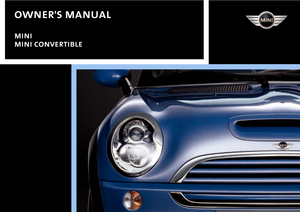 1
1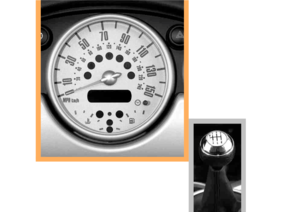 2
2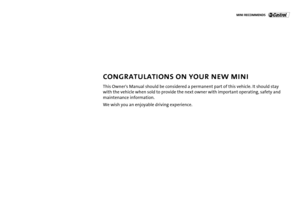 3
3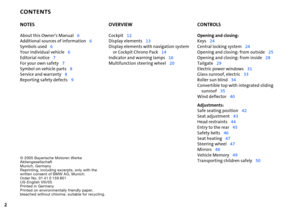 4
4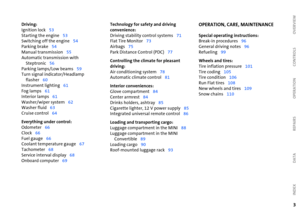 5
5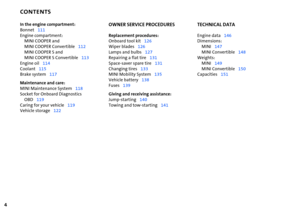 6
6 7
7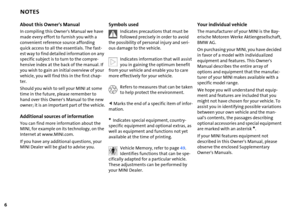 8
8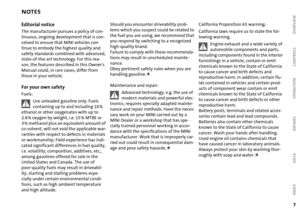 9
9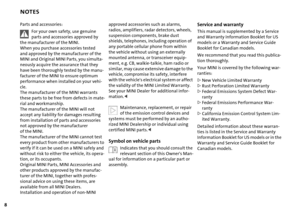 10
10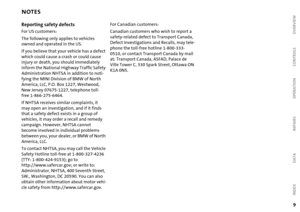 11
11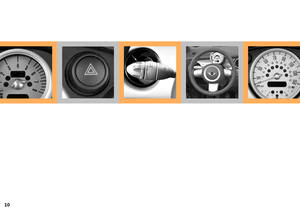 12
12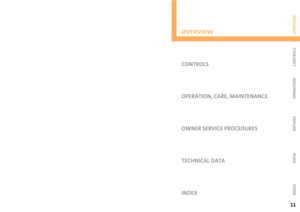 13
13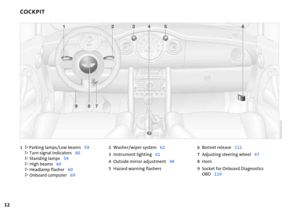 14
14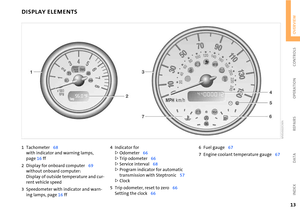 15
15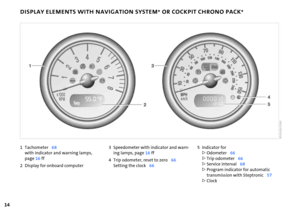 16
16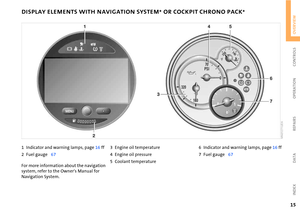 17
17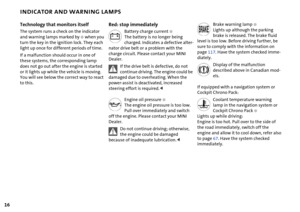 18
18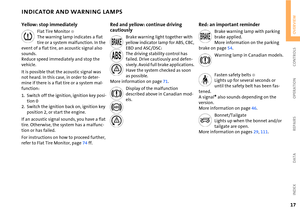 19
19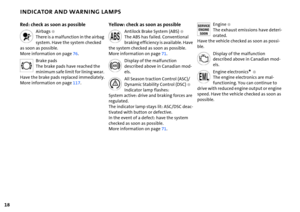 20
20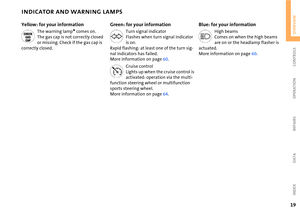 21
21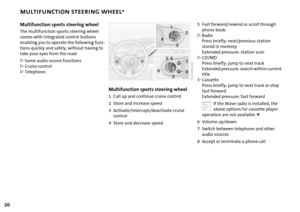 22
22 23
23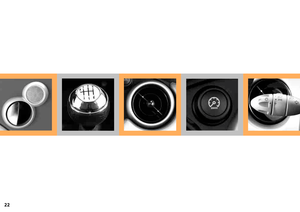 24
24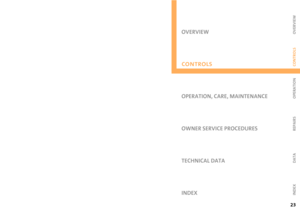 25
25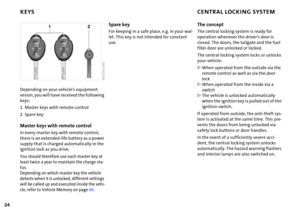 26
26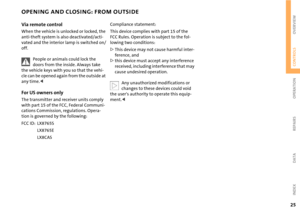 27
27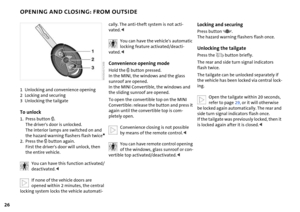 28
28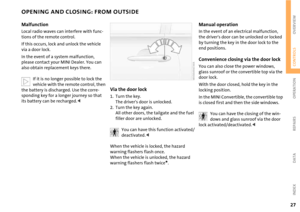 29
29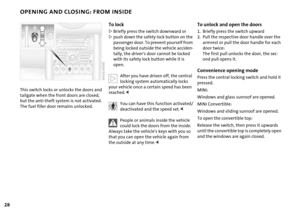 30
30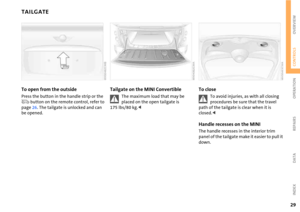 31
31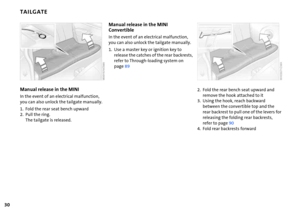 32
32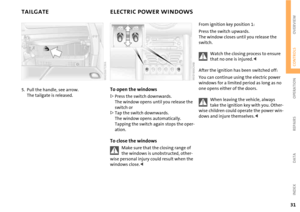 33
33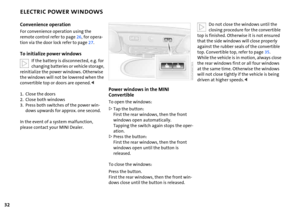 34
34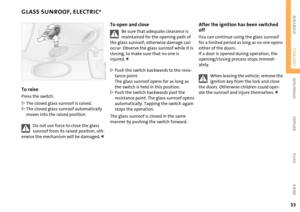 35
35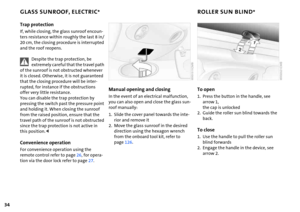 36
36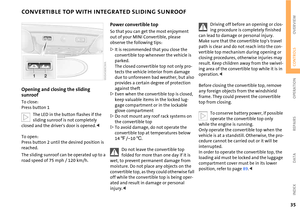 37
37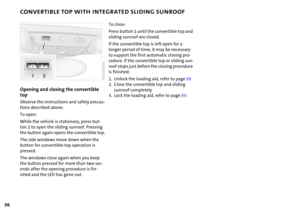 38
38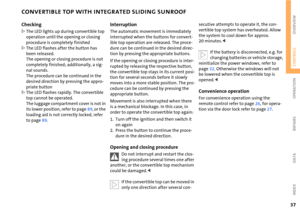 39
39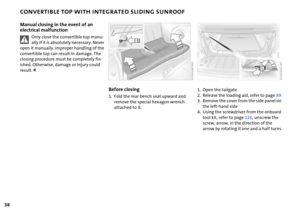 40
40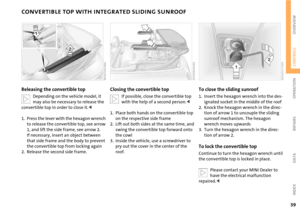 41
41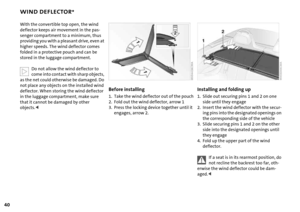 42
42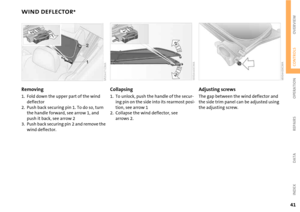 43
43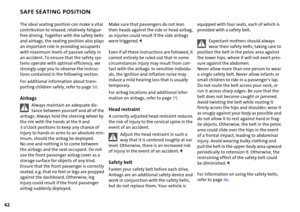 44
44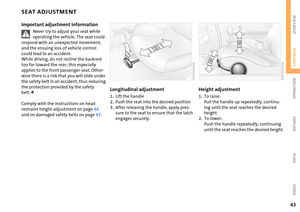 45
45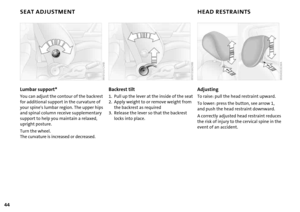 46
46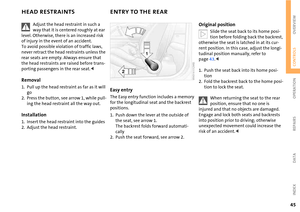 47
47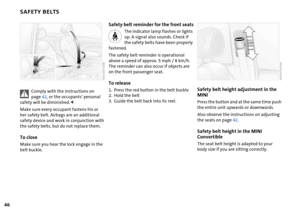 48
48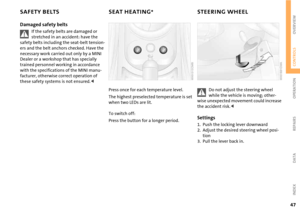 49
49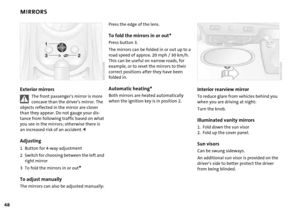 50
50 51
51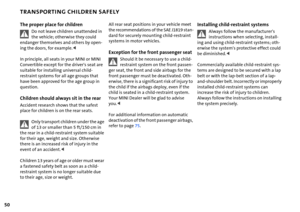 52
52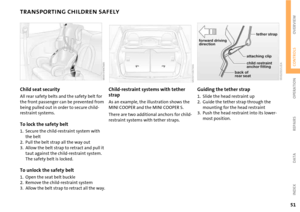 53
53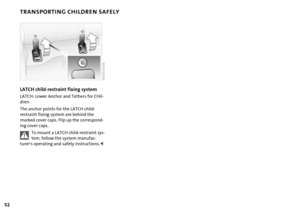 54
54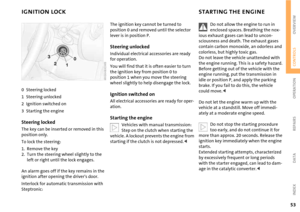 55
55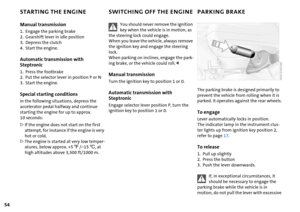 56
56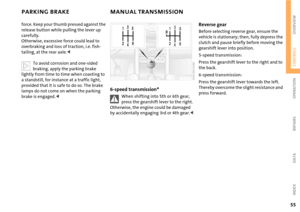 57
57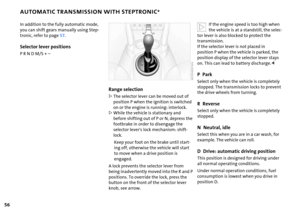 58
58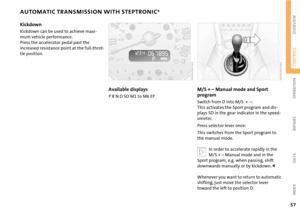 59
59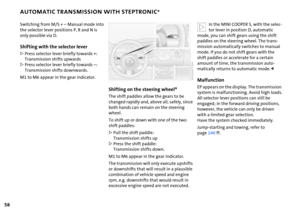 60
60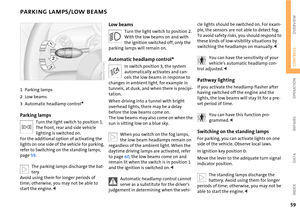 61
61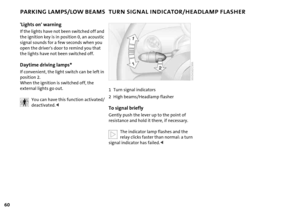 62
62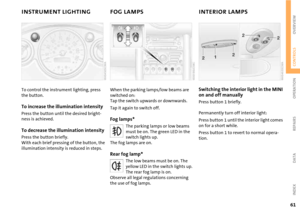 63
63 64
64 65
65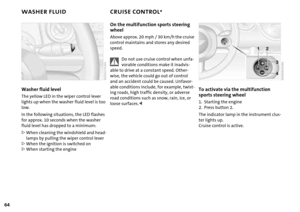 66
66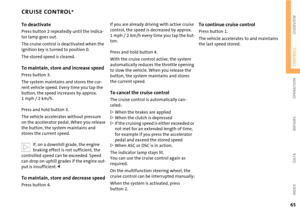 67
67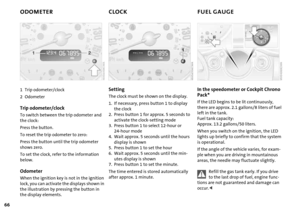 68
68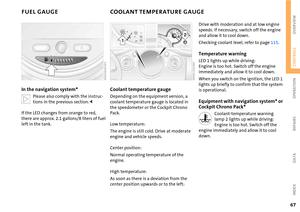 69
69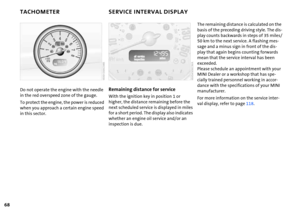 70
70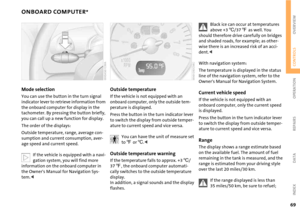 71
71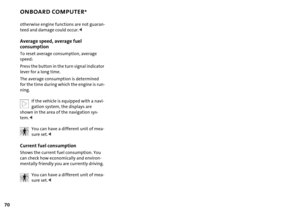 72
72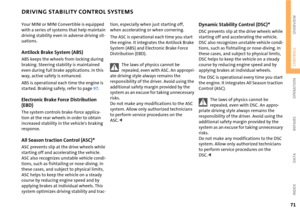 73
73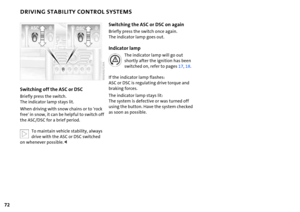 74
74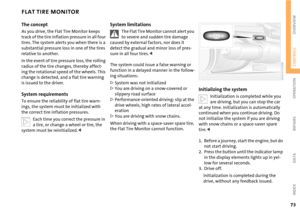 75
75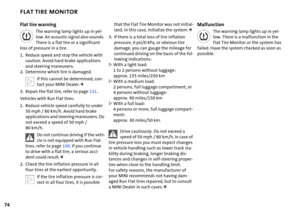 76
76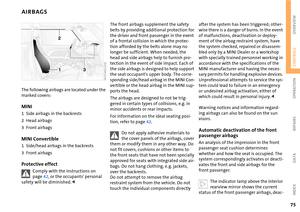 77
77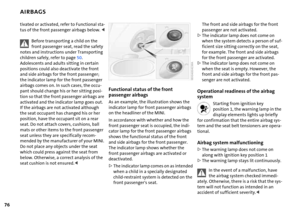 78
78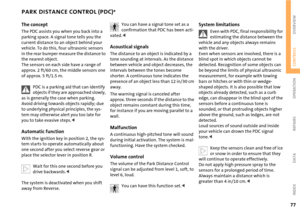 79
79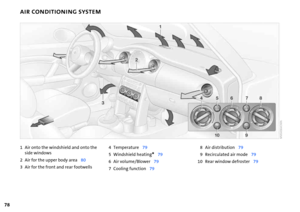 80
80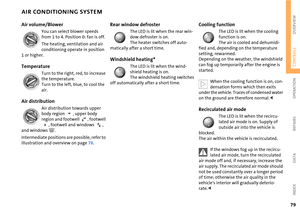 81
81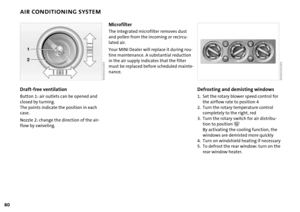 82
82 83
83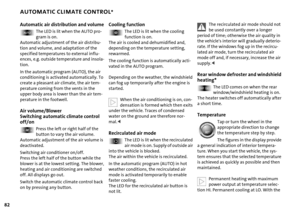 84
84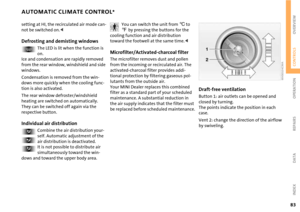 85
85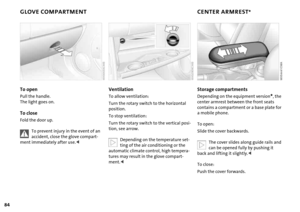 86
86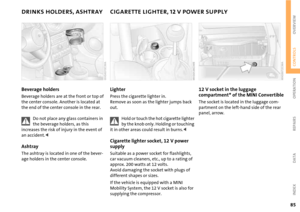 87
87 88
88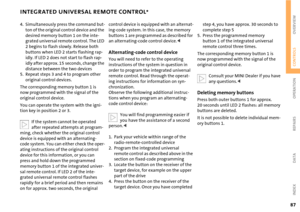 89
89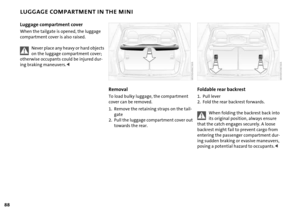 90
90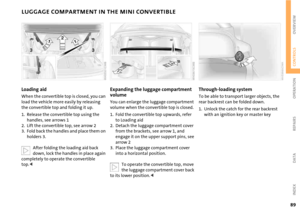 91
91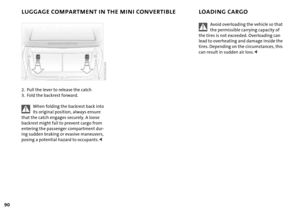 92
92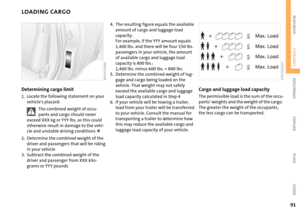 93
93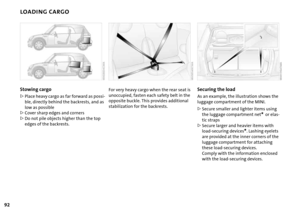 94
94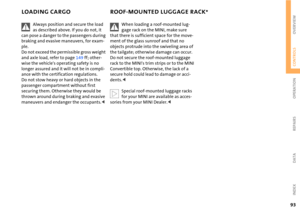 95
95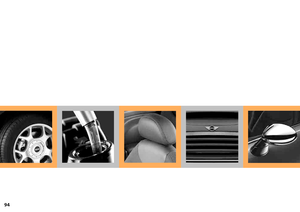 96
96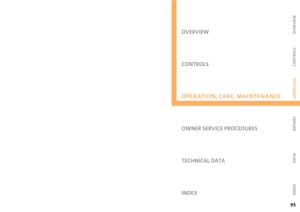 97
97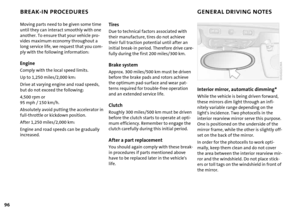 98
98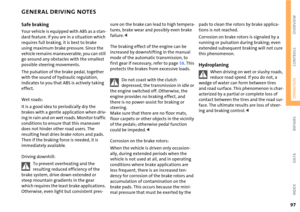 99
99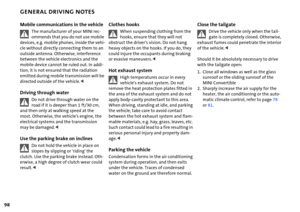 100
100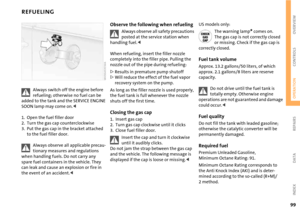 101
101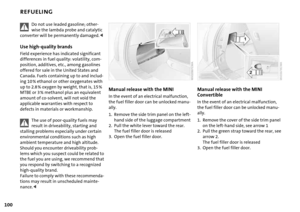 102
102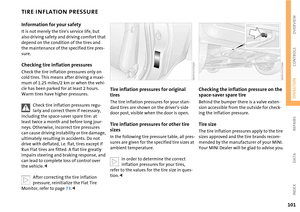 103
103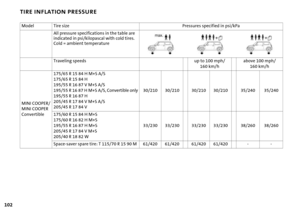 104
104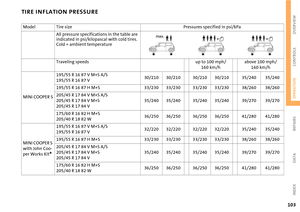 105
105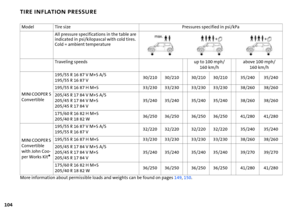 106
106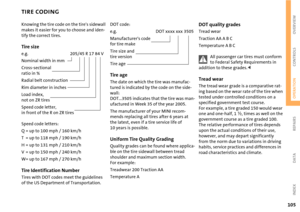 107
107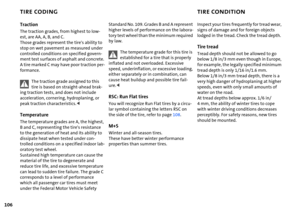 108
108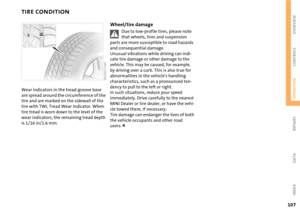 109
109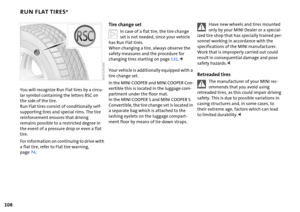 110
110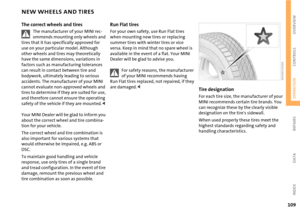 111
111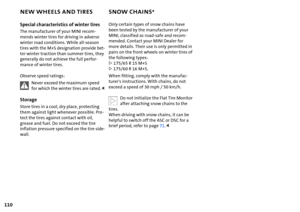 112
112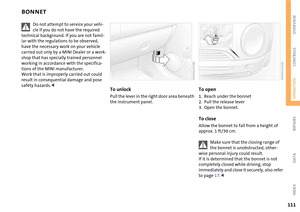 113
113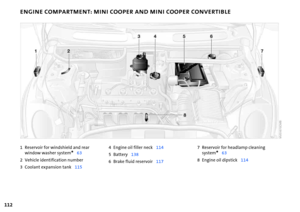 114
114 115
115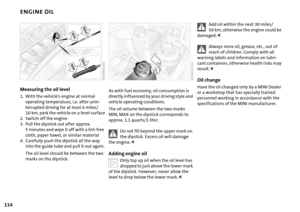 116
116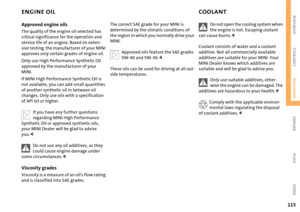 117
117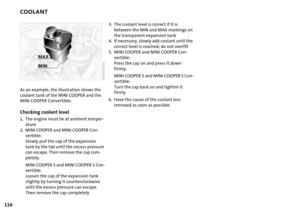 118
118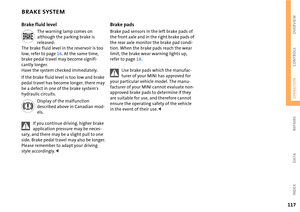 119
119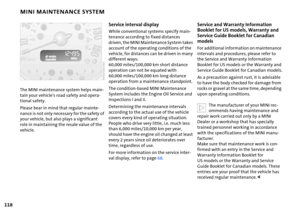 120
120 121
121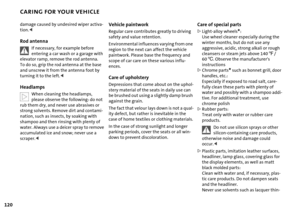 122
122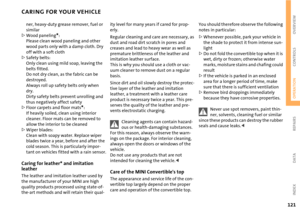 123
123 124
124 125
125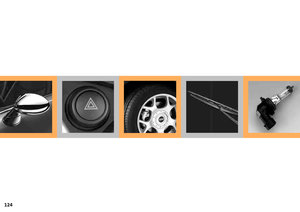 126
126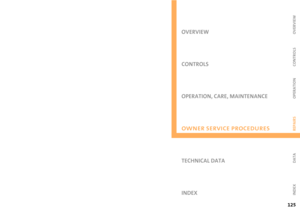 127
127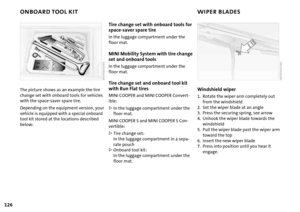 128
128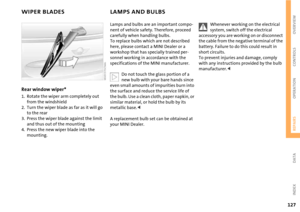 129
129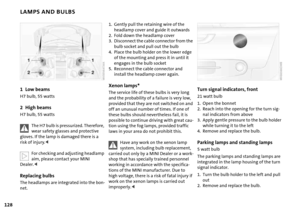 130
130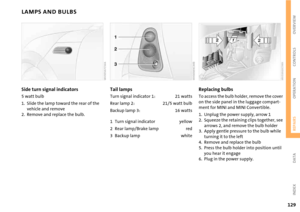 131
131 132
132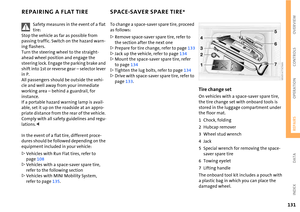 133
133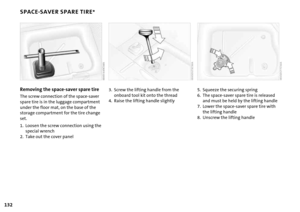 134
134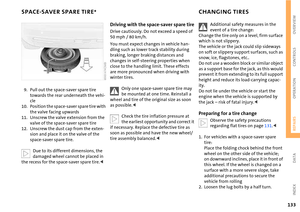 135
135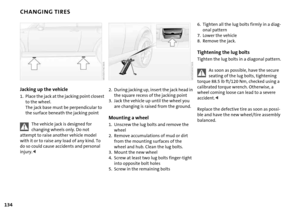 136
136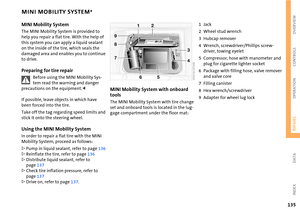 137
137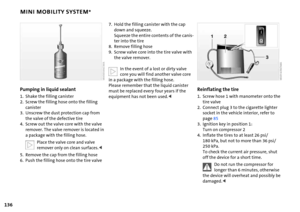 138
138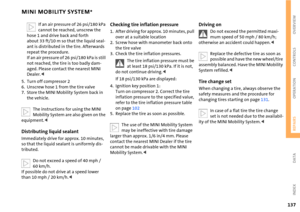 139
139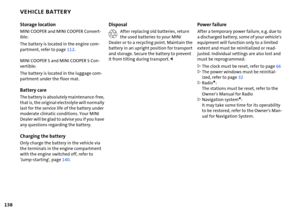 140
140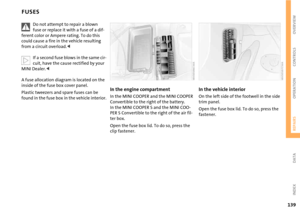 141
141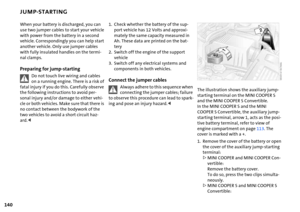 142
142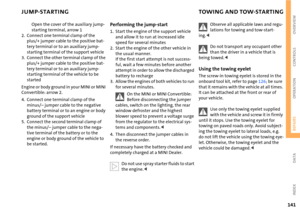 143
143 144
144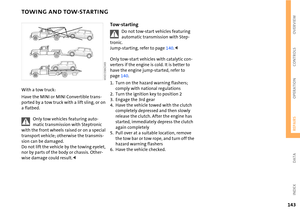 145
145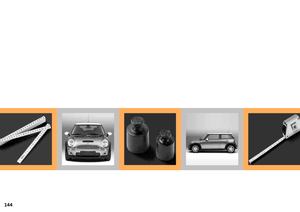 146
146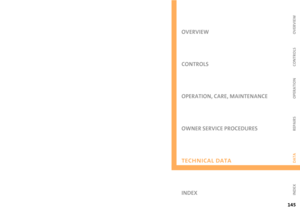 147
147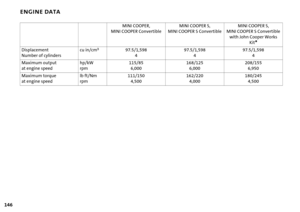 148
148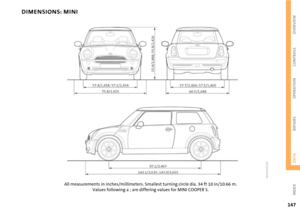 149
149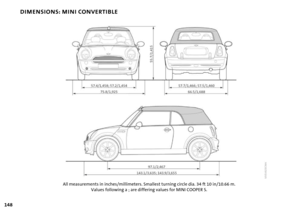 150
150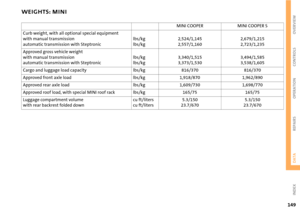 151
151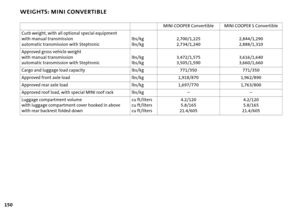 152
152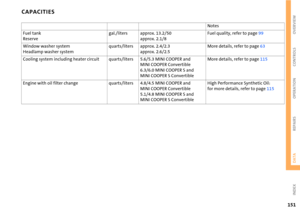 153
153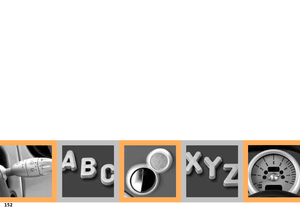 154
154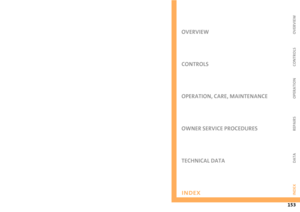 155
155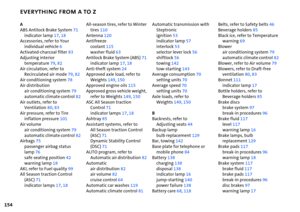 156
156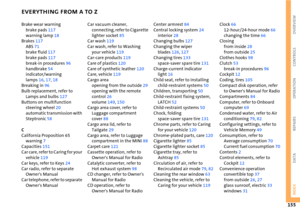 157
157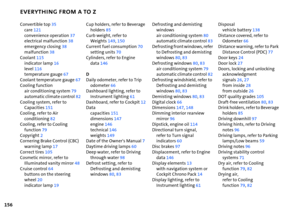 158
158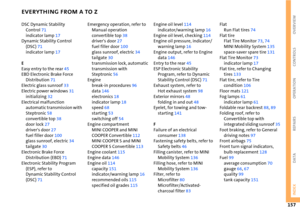 159
159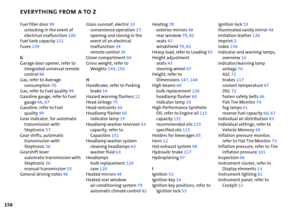 160
160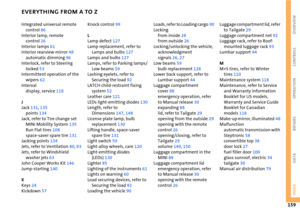 161
161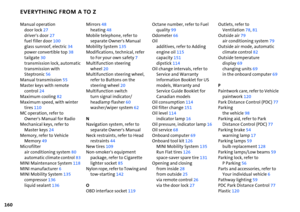 162
162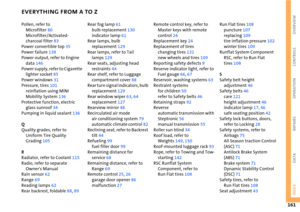 163
163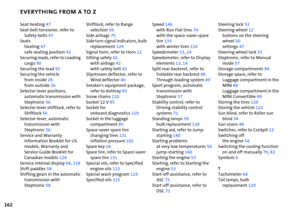 164
164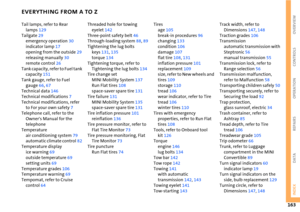 165
165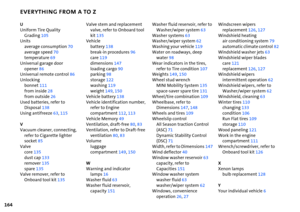 166
166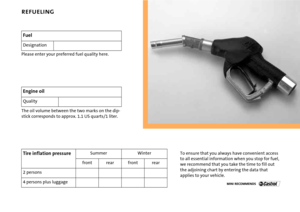 167
167






